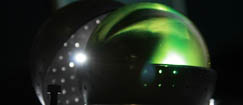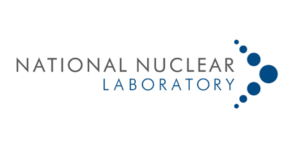Sunday 25 May 2014
NNL to work with HGNE and TEPCO on Fukushima cleanup effort

The UK’s National Nuclear Laboratory (NNL) is pleased to announce a commercial arrangement with Hitachi-GE Nuclear Energy, Ltd. (HGNE) relating to the use of NNL’s “RadBall” technology at TEPCO’s Fukushima Daiichi site in Japan. The announcement was made as a group of NNL scientists visited the Fukushima Daiichi site. Included in the visit were Kat Lennox and Lorien Howarth – two of the very few female experts from outside Japan to visit Fukushima Daiichi since the earthquake and tsunami in March 2011.
The 2011 events in Japan left nuclear reactors at Fukushima Daiichi badly damaged and a substantial amount of radioactive material was dispersed within the reactor systems and beyond, creating a complex cleanup challenge. NNL’s RadBall technology, which is based on the use of a radiation-sensitive material to analyse the extent and location of radioactive contamination within confined spaces, has been selected for potential use in mapping the radiation levels in parts of the Fukushima Daiichi reactors, and identifying the locations of the major contamination hot-spots.
The RadBall technology, which has been developed and tested over the past several years by NNL, is small and does not require any external power supply, so it is well suited for use in this challenging environment. The potential application of RadBall to the Fukushima Daiichi cleanup effort was first highlighted during a visit and seminar – organised by UK Trade & Investment – for UK nuclear companies to visit Japan in October 2011, held at the British Embassy in Tokyo.
NNL’s Managing Director Paul Howarth said today:
“The cleanup of the Fukushima Daiichi site is one of the major challenges facing the global nuclear industry at present, and I’m delighted that this NNL technology looks set to be considered as part of the solution to that challenge. We are looking forward to working with HGNE and TEPCO to better understand the details of the site and to help them to evaluate the capabilities of RadBall.”

